
The FAA is committed to making aviation cleaner, quieter, and more sustainable. Here’s how we are going to do it:
-
Climate Action Plan
-
Aviation Fuel
-
EAGLE
-
Technologies
-
Flight Operations
-
Airports
-
Noise
-
Stories
At the United Nations Climate Change Conference in Nov. 2021, U.S. Transportation Sec. Pete Buttigieg released the U.S. Aviation Climate Action Plan that sets out to achieve net-zero greenhouse gas emissions from the U.S. aviation sector by 2050. Because transportation produces the most emissions, the U.S. DOT and FAA need to be a large part of the solution. This ambitious, but achievable action plan, will create a sustainable aviation system that the United States is committed to. The U.S. also will work with international partners to maintain and strengthen the Carbon Offsetting and Reduction Scheme for International Aviation.
- Climate Action Plan (summary)
- Committed to Making Aviation Cleaner, Quieter, and More Sustainable – overview
- How Your Airport and Your Skies are Getting Greener – fact sheet
- U.S. Aviation Environmental Accomplishments for 2022 – fact sheet

Sustainable aviation fuels (SAF) produced from renewable and waste feedstock can provide the greatest impact in our effort to reduce greenhouse gas emissions. [See chart above for details.] Such fuels have the potential to slash emissions by up to 100 percent and will be critical to the aviation industry’s ability to meet the net-zero emissions goal. SAF can be used safely in today’s fleet of jet aircraft, without modification, and are produced from wastes, residues, biomass, sugar, oils and gaseous sources of carbon. FAA has partnered with industry for more than a decade to develop SAF through the Commercial Aviation Alternative Fuel Initiative (CAAFI). The FAA is working with the Departments of Energy and Agriculture on a “SAF Grand Challenge” to expand SAF use to 3B gallons of per year by 2030 and 100% of use by 2050.
- NEW Sustainable Aviation Fuels page
- $300 Million in FAST-Grant Funding for SAF Projects – news release
- Sustainable Aviation Fuels Update – slide presentation
- Potential Sources of Sustainable Aviation Fuels – fact sheet
- Commercial Aviation Fuel Initiative
- Sustainable Aviation Fuel Grand Challenge
- Flight Plan for Sustainable Aviation Fuel
- Putting Sustainable Aviation Fuels to the Test – fact sheet
- Center of Excellence for Alternative Jet Fuels and Environment (ASCENT) sustainable aviation fuels projects
The FAA and partners in the aviation community launched the EAGLE initiative as the result of a Congressionally mandated report from the National Academies. The EAGLE team’s goal is to eliminate leaded aviation fuels in piston-engine aircraft safely by the end of 2030.
The FAA also is supporting research for piston aircraft to operate safely without leaded gasoline and encouraging actions that minimize potential exposure to aircraft lead emissions.
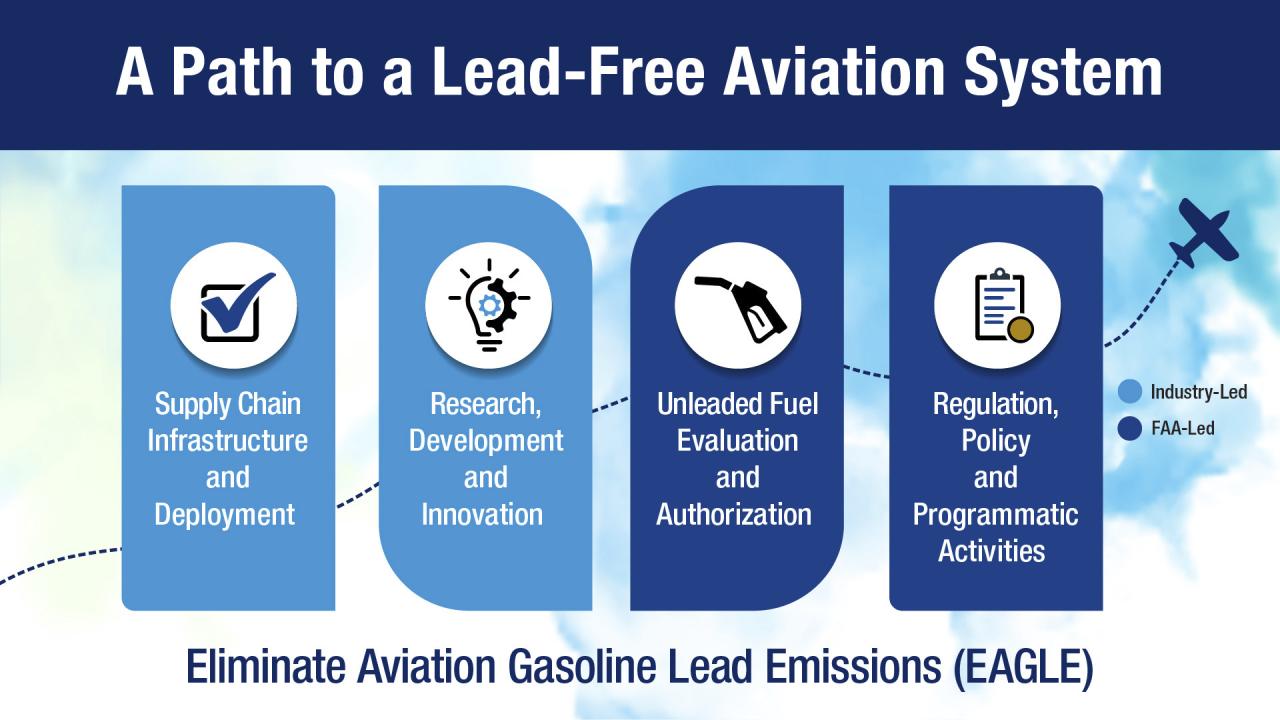
- EAGLE Partnership – Eliminating Leaded Aviation Fuel
- EAGLE partnership website
- Eliminating Lead Emissions in Aviation – fact sheet
- Leaded Aviation Fuel and the Environment
- FAA Safety Briefing – Looking at the Future of AvGas
- NASEM Report – Options for Reducing Lead Emissions From Piston-Engine Aircraft
- Leaded Fuel Announcement – news release
Through the Sustainable Flight National Partnership, NASA and the FAA are working with industry to accelerate the development of more efficient aircraft and engine technologies with a 30-percent improvement in fuel savings compared to today’s planes, while also delivering substantial noise and emissions reduction benefits.
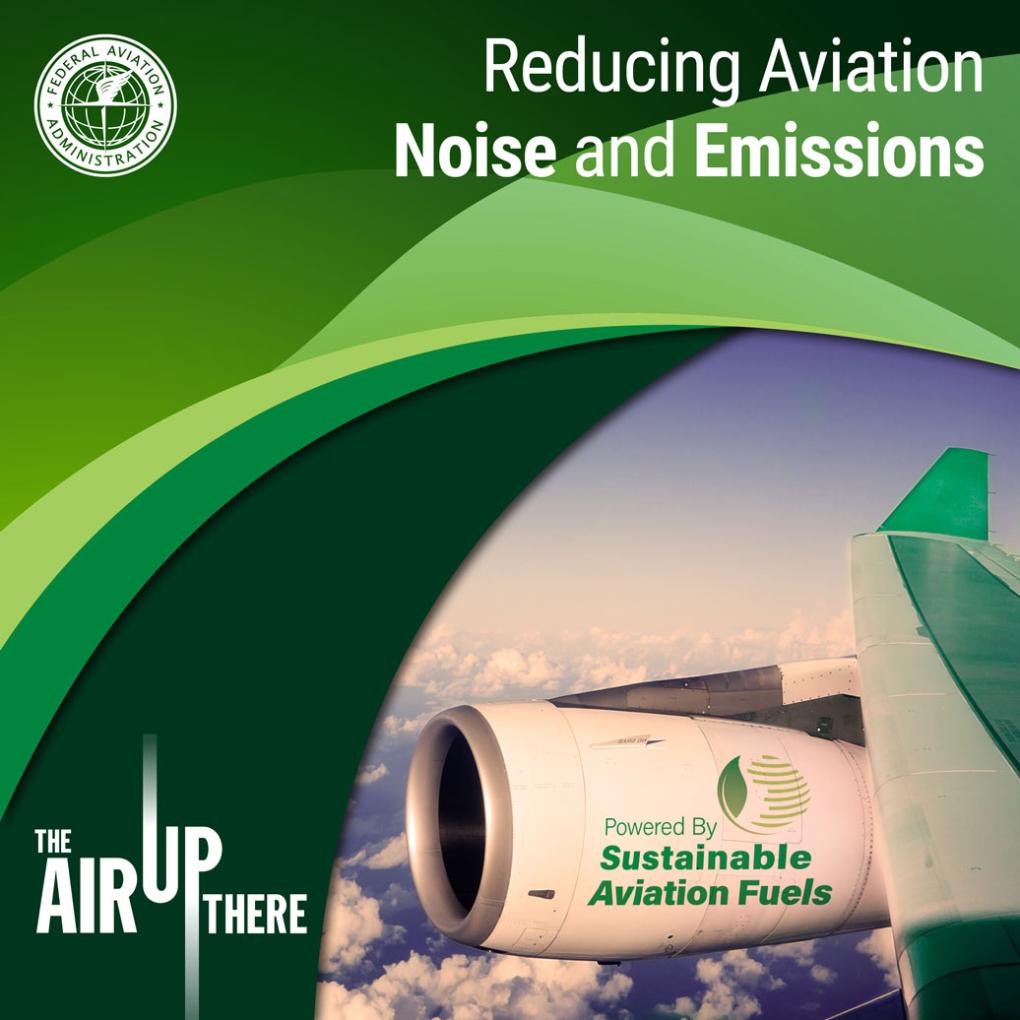
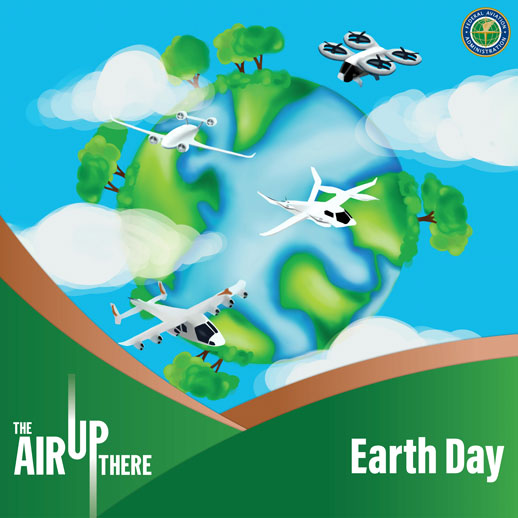 The FAA provides major support to the ASCENT program for university teams from across the country to research and demonstrate the viability of innovative airframe, engine and flight management technologies that reduce noise, emissions, and fuel burn. Recent funding includes $14.4 million in grants to teams at 13 universities. A detailed description of all 35 projects and their associated grant amounts can be found here. The Continuous Lower Energy, Emissions and Noise (CLEEN) Program also is a significant environmental effort by the FAA to accelerate the development of new aircraft and engine technologies.
The FAA provides major support to the ASCENT program for university teams from across the country to research and demonstrate the viability of innovative airframe, engine and flight management technologies that reduce noise, emissions, and fuel burn. Recent funding includes $14.4 million in grants to teams at 13 universities. A detailed description of all 35 projects and their associated grant amounts can be found here. The Continuous Lower Energy, Emissions and Noise (CLEEN) Program also is a significant environmental effort by the FAA to accelerate the development of new aircraft and engine technologies.
Recent news about the CLEEN cost-sharing partnership with industry can be found here.

- Reducing Aviation Noise and Emissions – The Air Up There Podcast
- Sustainable Aviation – The Air Up There Podcast
- ASCENT Aircraft and Engine Technology Projects
- Special Conditions Rule – Electric Engine Airworthiness Standards
- Embry-Riddle Aeronautical University – FAA Powers Electric Flight Research with New Grant
- ASCENT Project 052 – Assessment of Electrification Strategies for Aviation
- 7 Ways That Drones Foster Sustainability – fact sheet
- Accelerating to the Future: The FAA’s CLEEN Research Initiative – fact sheet
- FAA Invests $35M in Environmental Partnership with Top Universities – fact sheet
While the U.S. National Airspace System is efficient, there are opportunities for improvements in all phases of flight to reduce fuel burn. This includes improvements during taxiing, takeoff and landing operations as well as airlines flying more optimal trajectories that reduce fuel usage. Research shows that aircraft operations also affect the climate through non-CO2 emissions, especially via contrails and aviation-induced cloudiness. The U.S. government is supporting research to cost-effectively reduce climate impacts of aviation by limiting contrail formation. The FAA’s NextGen initiatives also support our environmental goals through innovative air traffic control procedures involving Performance Based Navigation and Optimized Profile Descents.
- ATC and Environmental Awareness – fact sheet
- Terminal Flight Data Manager (TFDM)
- Rolling to the Runway news release and Rolling to the Runway media briefing
- Optimized Profile Descents
- OPDs 2022 news release
- OPDs 2023 news release
- Control Tower Design Initiative
- Architect discussion about sustainability video
- Draft Environmental assessment news release
- Tower Design selection news release
- Tower Design news release
- Trajectory Based Operations (TBO)
- ASCENT Operations Projects
- Aviation Environmental Design Tool
- How the FAA is Championing a Greener Aviation Future – fact sheet
- 6 New Ways Your Aircraft May Be Flying Through the Sky
The government provides incentives to reduce emissions from airports through funding and development of several grant programs. Among others, they include the Zero Emission Vehicle Program, which provides grants to replace or convert on-road vehicles for zero-emission vehicles. The Energy Efficiency Program provides funding to identify and implement fuel reduction measures at airports.
- Initiatives for reductions in airport carbon emissions
- Airport Climate Challenge news release

- Voluntary Airport Low Emissions program and program fact sheet
- ZEV program news release and section 192
- FAA Harnesses the Sun to Save Energy and Lower Expenses – fact sheet
- Airport Cooperative Research Program
- Airport Environmental Review Process (NEPA)
- Compatible Land Use
While there are many benefits to air travel, aviation noise can be a concern for communities. Addressing this concern requires collaboration and community engagement among all aviation stakeholders including the FAA, air carriers, airports, aircraft manufacturers, research universities, other stakeholders and industry partners, local communities, and elected officials. Our Noise Landing Page offers basics about aviation noise, information about noise research, and how to share your concerns or questions with the FAA.
- Review of FAA Noise Policy. Here is the latest information.
- National Park Service plans. Here is the latest information.
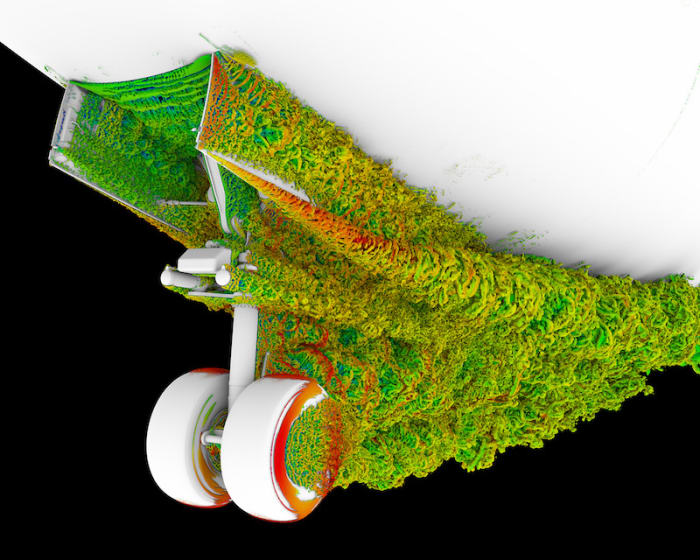
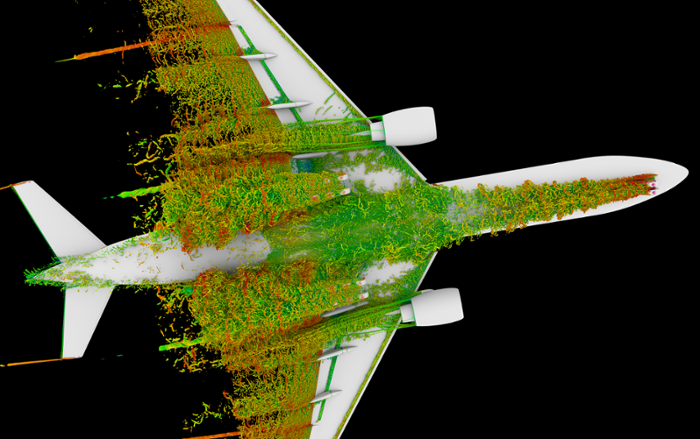
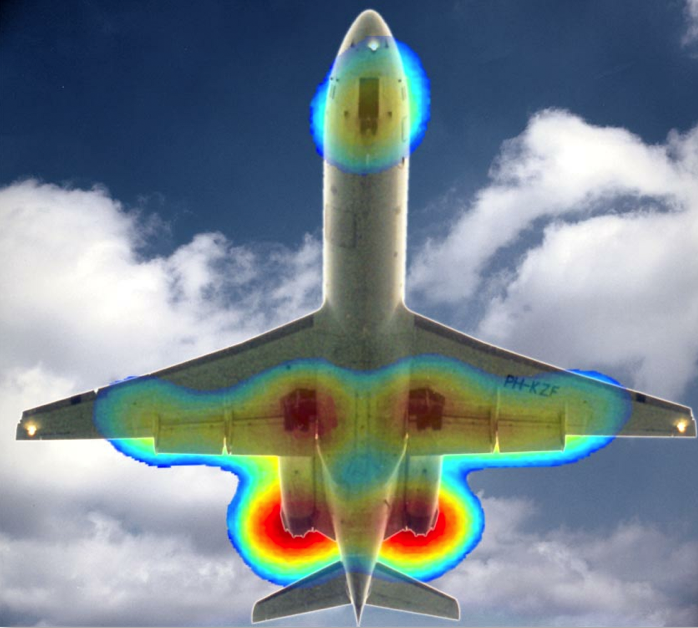
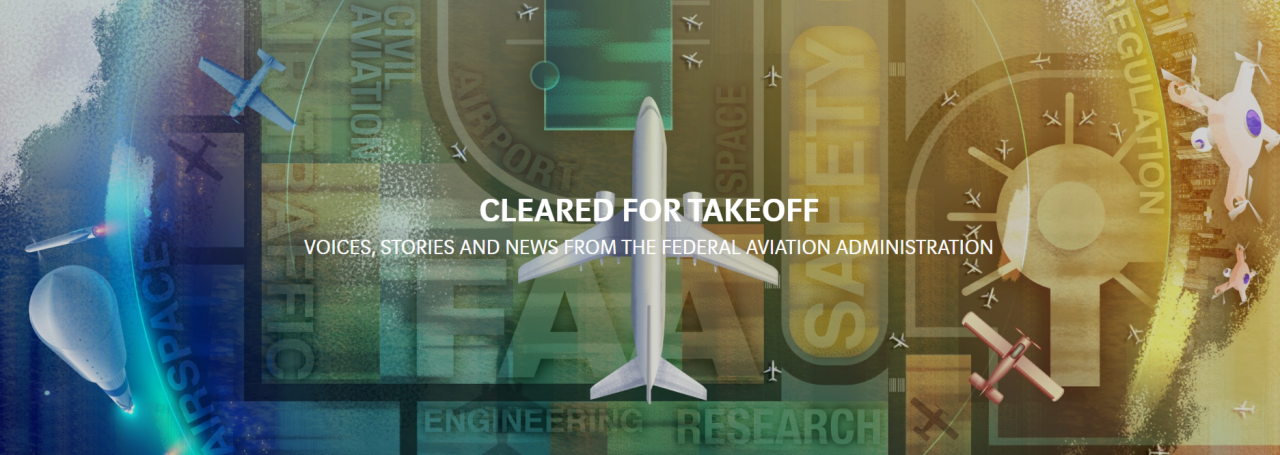 FAA Collaborations Advancing Sustainable Aviation Fuels
FAA Collaborations Advancing Sustainable Aviation Fuels- Electric Propulsion Research Gets a Charge from Upgraded FAA Test Facility
- A Sustainable Standout in Oklahoma City
- FAA Tests Solar-Power Airfield Lighting at Smaller Airport
- 7 Ways That Drones Foster Sustainability
- 10 Potential and Surprising Sources of Sustainable Aviation Fuels
- 5 Ways the FAA is Championing a Greener Aviation Future
- 5 Videos about Aviation and the Environment That You Need to See
- 7 Ways Your Airport is Getting Greener
- The Environmental Page on “Cleared for Takeoff.”
There are many initiatives under way – we will need to await the results
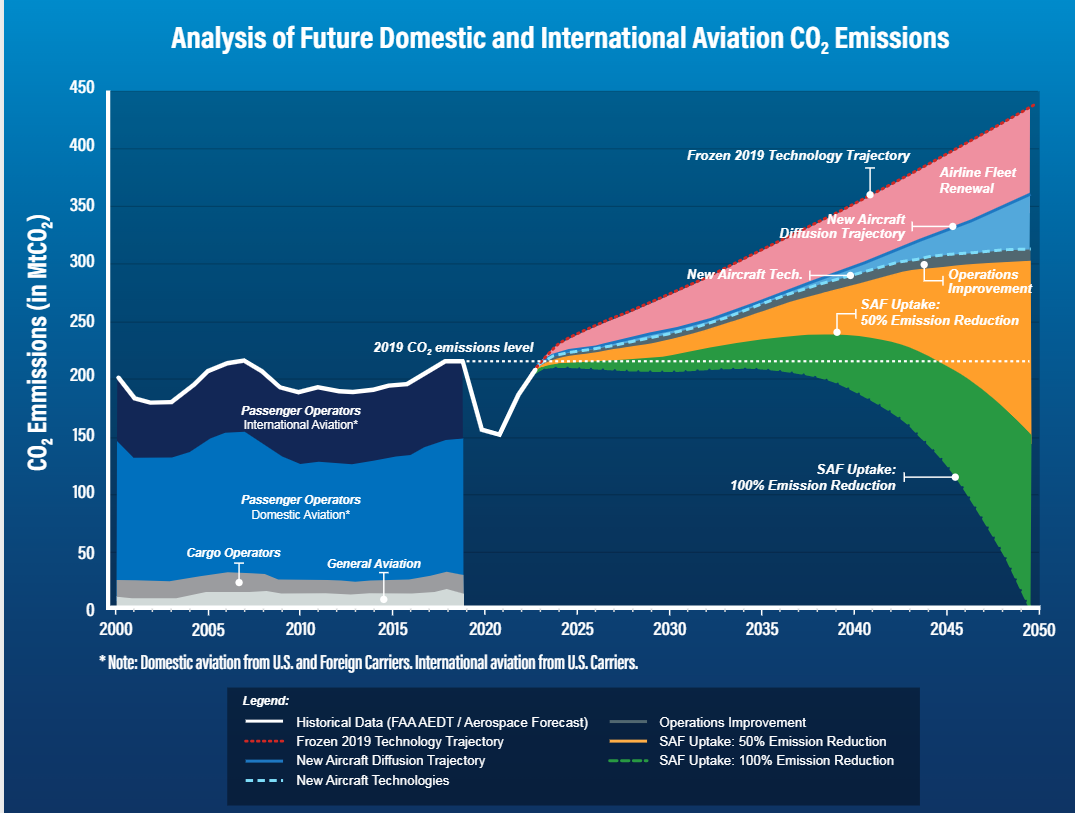
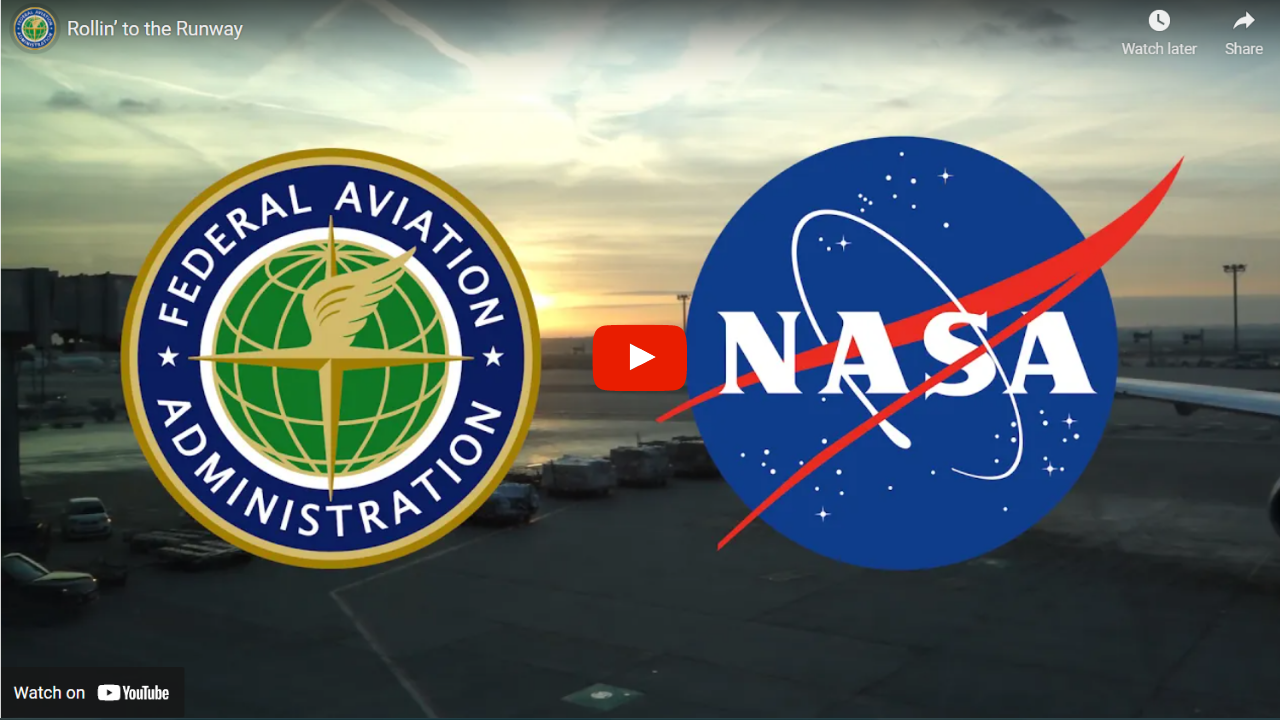


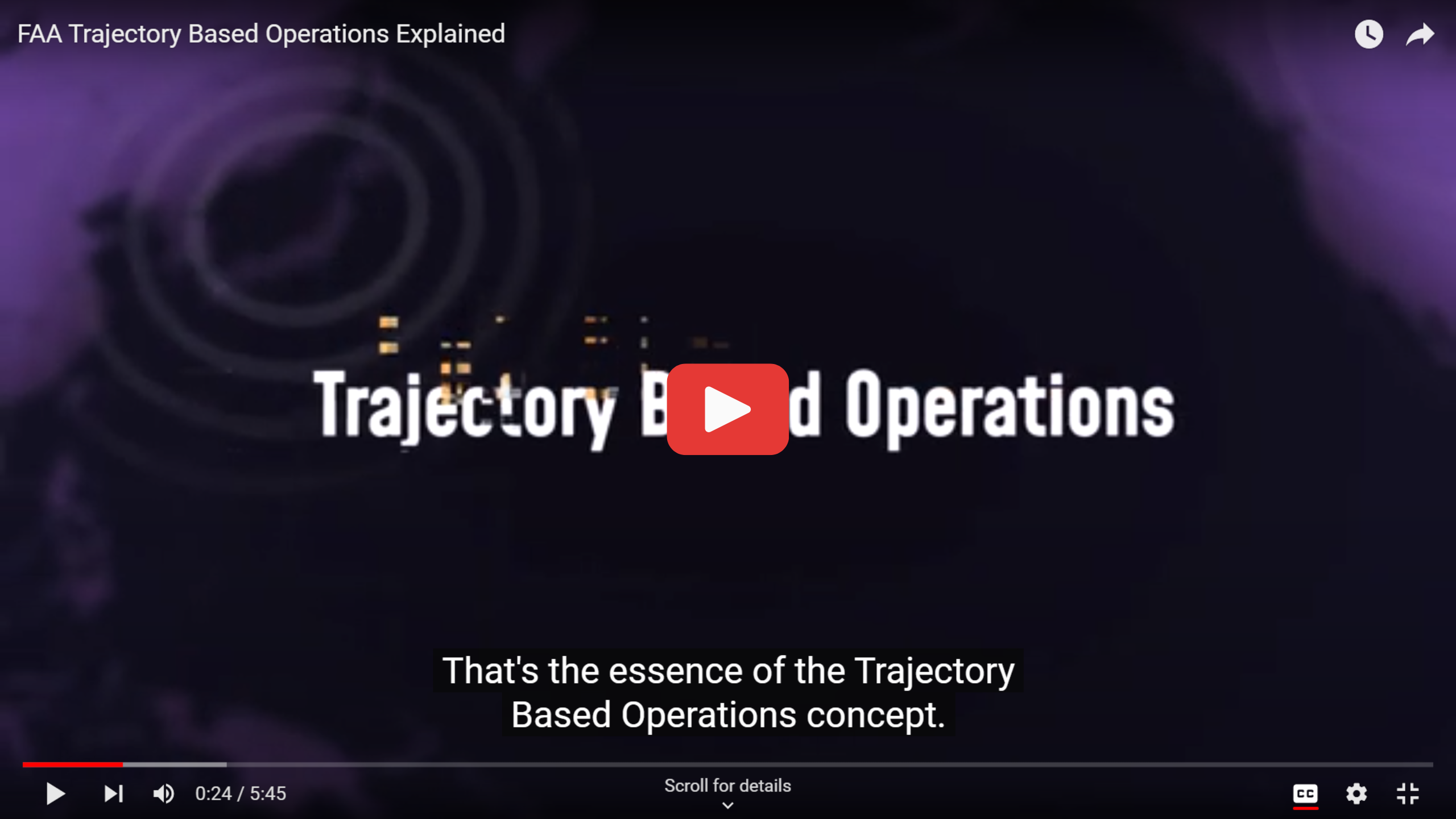
Leave a Reply